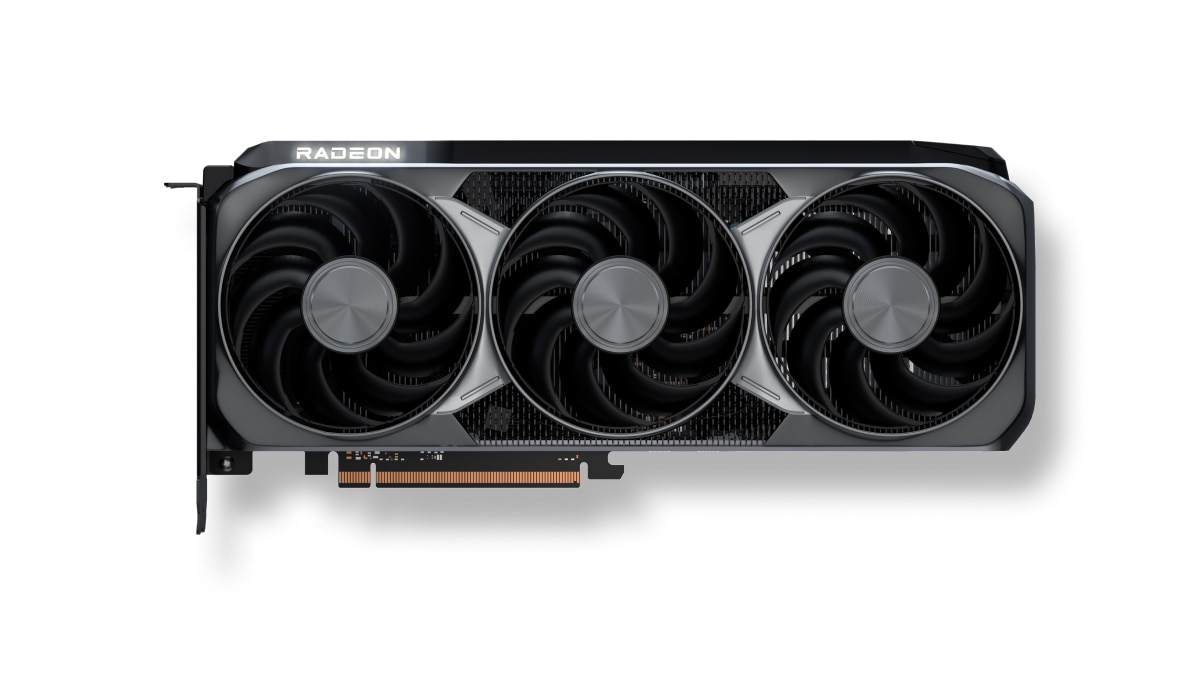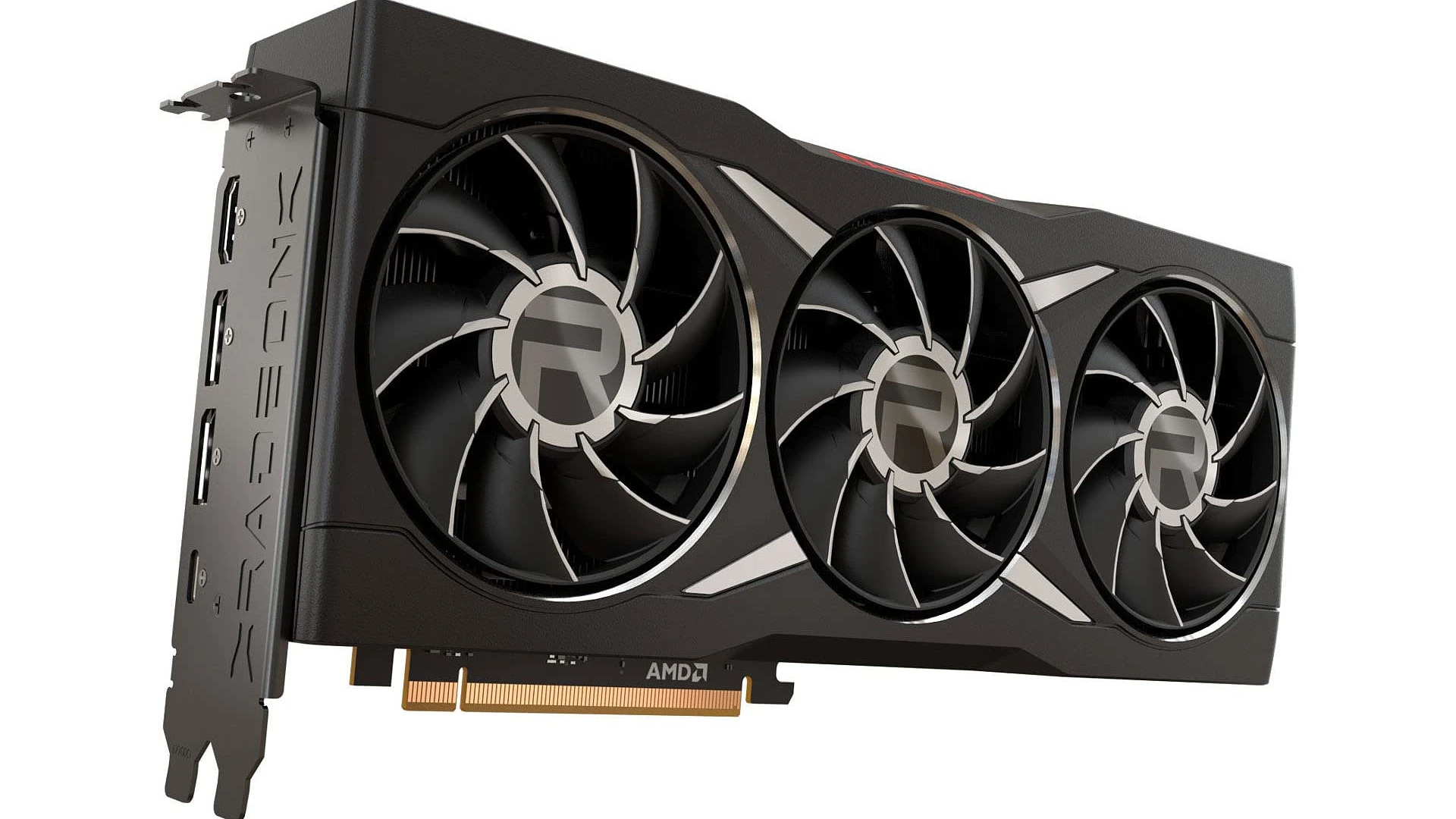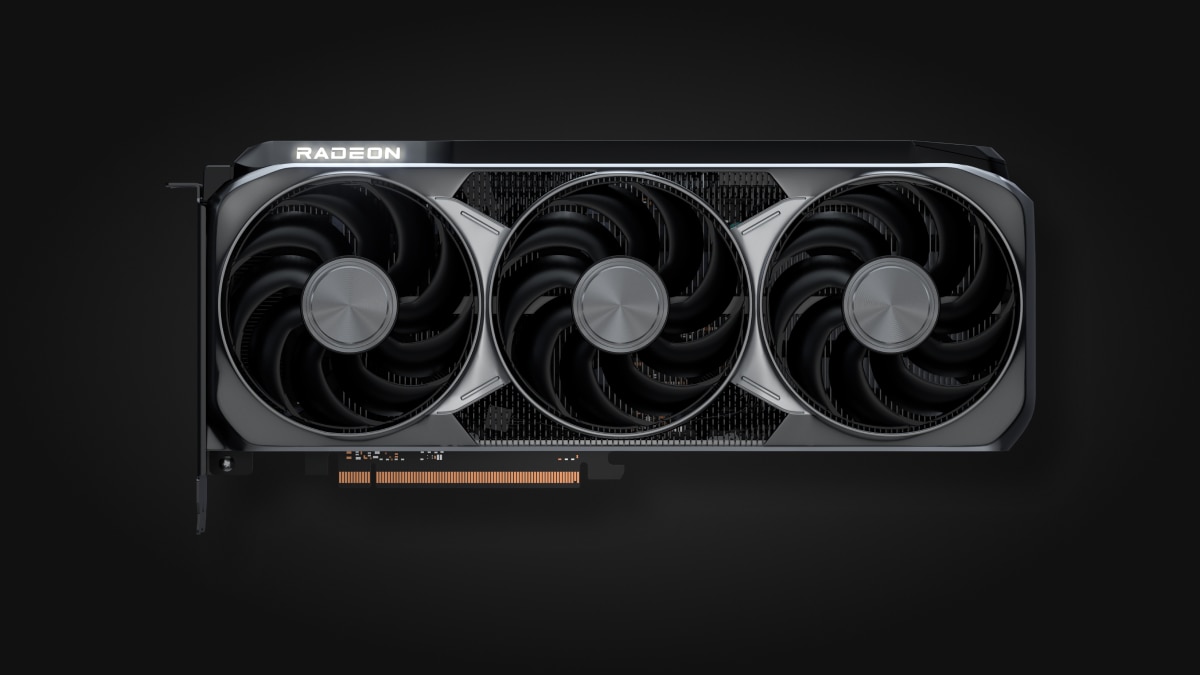Choosing between the AMD Radeon RX 7700 XT and the RX 9070 XT can feel overwhelming with new models and updated specs. For most users, the RX 9070 XT stands out with stronger performance and better specs, but the RX 7700 XT can still be a solid choice for those on a tighter budget.
The RX 9070 XT outperforms the RX 7700 XT in floating-point power, pixel rate, and memory. It is about 11% faster overall, making it a strong pick for high-demand tasks or gaming at higher settings. Users looking to push frame rates or run heavy applications will likely see noticeable gains with this newer model, as confirmed by several recent benchmark results.
Which AMD Radeon Card Is Best for Your Needs?
AMD’s Radeon GPU lineup has expanded significantly, offering options for nearly every budget and performance tier. But with so many models—from the RDNA 3-based RX 7700 XT to the newer RDNA 4-powered RX 9070 XT—it can be tough to figure out which one fits your gaming needs. Whether you’re chasing high frame rates at 1080p or aiming for smooth 4K gameplay, this breakdown will help you pick the best Radeon card for your setup.

Quick Comparison Table
| GPU | Architecture | VRAM | Target Resolution | MSRP | Best For |
|---|---|---|---|---|---|
| RX 7700 XT | RDNA 3 | 12GB GDDR6 | 1440p | $449 | Competitive esports, mainstream AAA gaming |
| RX 7800 XT | RDNA 3 | 16GB GDDR6 | 1440p / Entry 4K | $499 | Balanced gaming at high settings |
| RX 7900 GRE | RDNA 3 | 16GB GDDR6 | 1440p Ultra / 4K Medium | $549 | Enthusiast value option |
| RX 7900 XT | RDNA 3 | 20GB GDDR6 | 4K | $699 | High-end gaming, content creation |
| RX 7900 XTX | RDNA 3 | 24GB GDDR6 | 4K Ultra | $999 | Maxed-out settings, long-term investment |
| RX 9070 | RDNA 4 | 16GB GDDR6 | 1440p Ultra / 4K | $549 | High refresh rate gaming |
| RX 9070 XT | RDNA 4 | 16GB GDDR6 | 4K Ultra | $599 | Competitive with RTX 4080 Super |
Performance Breakdown
RX 7700 XT (RDNA 3)
- 1080p Ultra: 120–150 FPS in most modern games
- 1440p High: 90–110 FPS
- Ray Tracing: Limited performance at 1440p with RT enabled
- Best For: Budget-conscious gamers who want excellent 1080p/1440p performance without overspending
RX 7800 XT
- Strong 1440p card with more VRAM for future-proofing
- Better performance in RT and high texture games
- A solid middle-ground GPU with consistent performance for $50 more than 7700 XT
RX 7900 GRE / XT / XTX
- GRE and XT are ideal for 1440p/4K hybrid setups
- XTX pushes past 100 FPS in many 4K titles at ultra settings
- More suited for creators or gamers running 4K monitors with demanding titles
RX 9070 / RX 9070 XT (RDNA 4)
- RX 9070 competes with RTX 4070 Ti; efficient for 1440p Ultra and stable 4K gaming at high settings
- RX 9070 XT offers performance matching the RTX 4080 Super in rasterized workloads
- Advanced AI acceleration and FSR 4 support improve upscaling and performance in supported titles

Key Architectural Differences
| Feature | RDNA 3 | RDNA 4 |
|---|---|---|
| Ray Tracing | 2nd Gen | 3rd Gen (up to 2x faster) |
| AI Acceleration | Basic AI ops | Up to 8x faster AI throughput |
| FSR Support | FSR 3 | FSR 4 |
| Power Efficiency | Good | Improved across the board |
RDNA 4 (RX 9070 series) represents a true next-gen leap, especially in ray tracing and AI workloads. These cards are more future-ready if you’re targeting games with path tracing, AI-enhanced visuals, or planning a multi-year upgrade cycle.
Which One Should You Buy?
- For 1080p to 1440p Esports/AAA Gaming: RX 7700 XT or RX 7800 XT
- For 1440p Ultra / Light 4K: RX 7900 GRE or RX 9070
- For 4K Gaming at High Settings: RX 7900 XT or RX 9070 XT
- For 4K Ultra / Content Creators: RX 7900 XTX
If you’re buying today and want the most performance-per-dollar for high-end gaming, the RX 9070 XT offers the best blend of modern features, competitive 4K performance, and pricing—especially with RDNA 4’s efficiency and enhanced ray tracing.
Radeon GPU Frame Rate Benchmarks (Average FPS)
| GPU | Cyberpunk 2077 (1440p Ultra) | Cyberpunk 2077 (4K Ultra) | Starfield (1440p Ultra) | Starfield (4K Ultra) | Forza Horizon 5 (1440p Ultra) | Forza Horizon 5 (4K Ultra) |
|---|---|---|---|---|---|---|
| RX 7700 XT | 72 | 39 | 81 | 46 | 122 | 84 |
| RX 7800 XT | 85 | 51 | 93 | 58 | 138 | 96 |
| RX 7900 GRE | 92 | 59 | 100 | 66 | 144 | 104 |
| RX 7900 XT | 105 | 70 | 112 | 78 | 154 | 115 |
| RX 7900 XTX | 116 | 82 | 124 | 89 | 164 | 124 |
| RX 9070 | 98 | 64 | 106 | 71 | 150 | 112 |
| RX 9070 XT | 109 | 78 | 118 | 84 | 158 | 121 |
Key Takeaways
- The RX 9070 XT beats the RX 7700 XT in speed and specs.
- Users on a budget may still find good value in the RX 7700 XT.
- Each graphics card targets different needs and price points.
Comparative Analysis of AMD Radeon RX 7700 XT, RX 7800 XT, RX 9060, and RX 9070 XT
Each current AMD Radeon card offers a unique balance of price, performance, memory, and feature set. Differences in architecture, core specs, and supported technologies like FSR 4 and ray tracing mean each GPU fits a slightly different type of user.
Core Specifications and RDNA 4 Architecture
The RX 7700 XT and RX 7800 XT use the earlier RDNA 3 architecture, while the RX 9060 and RX 9070 XT are built on newer RDNA 4 tech, leading to improved efficiency and updated features. Both the RX 9060 and RX 9070 XT include more streaming processors, higher clock speeds, and a better power profile thanks to RDNA 4.
| GPU | Architecture | VRAM (GB) | Memory Type | Bus Width | Power (W) |
|---|---|---|---|---|---|
| RX 7700 XT | RDNA 3 | 12 | GDDR6 | 192-bit | ~245 |
| RX 7800 XT | RDNA 3 | 16 | GDDR6 | 256-bit | ~263 |
| RX 9060 | RDNA 4 | 12 | GDDR6 | 192-bit | ~190 |
| RX 9070 XT | RDNA 4 | 16 | GDDR6 | 256-bit | ~225 |
RDNA 4 graphics architecture offers better energy efficiency and support for the latest gaming features. RX 9070 XT and RX 9060 both benefit from these hardware advances.
Performance Benchmarks and Gaming Metrics
Performance tests show the RX 9070 XT leads in most games at 1440p and 4K, with the RX 9070 XT scoring around 9% to 16% higher than RX 9070 at both resolutions and outperforming the RX 7800 XT, especially in rasterization games. The RX 7800 XT still performs well at 1440p and holds a small lead over the RX 7700 XT, especially in demanding titles.
In gaming benchmarks, the RX 9060 matches RX 7700 XT in most scenarios but uses less power and produces less heat. The RX 9070 XT offers the largest performance gains, especially in titles optimized for RDNA 4. Frame generation and higher VRAM help both RDNA 4 cards handle larger textures and more complex scenes.
Ray Tracing, FSR 4, and Visual Technology
The RX 9070 XT and RX 9060 include upgraded ray tracing accelerators, improving their ray tracing performance over previous models. The RX 7800 XT and RX 7700 XT can run ray tracing, but the experience is smoother on RDNA 4 graphics cards in supported games.
FSR 4 support comes standard across these cards, but the RX 9070 XT and RX 9060 use enhanced hardware to get better results at higher resolutions and during multi-frame generation. This leads to sharper image quality and smoother gameplay when the feature is turned on.
Both RX 9070 XT and RX 7800 XT feature 16GB of GDDR6 memory, which supports higher texture detail in modern games. The 12GB in RX 9060 and RX 7700 XT is enough for 1080p and many 1440p games, but can limit settings in some newer AAA games with high-resolution texture packs.
Value, Market Positioning, and User Recommendations
Pricing, feature sets, and competition shape each Radeon card’s position in the market. The key differences matter most for people who want the best mix of performance and future relevance.
MSRP, Pricing Trends, and Partner Models
Most AMD cards launch at a set MSRP, but real-world pricing shifts quickly based on demand and inventory. Board partners like ASUS, Sapphire, and PowerColor often release overclocked or improved cooling models. These add value but usually sell at a premium.
The RX 7700 XT and RX 7800 XT entered the market with aggressive pricing aimed at the mainstream and upper midrange. The RX 7900 XT, 7900 XTX, and RX 9070 XT target enthusiasts but face tougher competition, so their prices move more often. Partner models like the ASUS TUF series tend to offer better coolers and higher boost clocks, which attract buyers who want lower noise or higher performance.
Watch for changes in retail price, especially after the release date and during sales. Sometimes, older AMD GPUs drop in price to compete with new Nvidia launches. Review tables like the one below to track price histories.
| Card | Launch MSRP | Typical Partner Premium |
|---|---|---|
| RX 7700 XT | $449 | $20–$70 |
| RX 7800 XT | $499 | $25–$60 |
| RX 7900 XT | $899 | $40–$100 |
| RX 9070 XT | $999 | $50–$120 |
Comparison With Nvidia and Other Competitors
Nvidia cards like the GeForce RTX 5070 Ti and RTX 40-series compete in most segments. The RTX 5070 Ti outperforms the RX 9070 XT in many workloads, especially in ray tracing according to recent discussions.
AMD cards often deliver better performance for the price in rasterization, but Nvidia keeps an edge in ray tracing and AI features. The RTX 5070 and 5070 Ti challenge AMD’s mid-to-high tier. Users who value features like DLSS and Frame Generation may lean Nvidia. Intel’s Arc A750 sits at a lower price but competes more with budget AMD GPUs and does not threaten the high end.
Nvidia’s RTX 5090 is rumored to push performance further, but that comes with a higher cost and limited availability at launch.
Use Cases: 1440p, 4K, Overclocking, and Content Creation
Users looking for high refresh rate 1440p gaming find the RX 7800 XT and RX 7900 XT perform well, often keeping frame rates above 100 FPS at high settings. For 4K gaming, the RX 7900 XTX and RX 9070 XT handle demanding titles but may fall behind Nvidia’s top cards when ray tracing is turned on.
Enthusiasts who overclock tend to pick board partner cards with premium VRMs and big coolers like those in the ASUS TUF lineup. Overclocking headroom varies, but AMD’s higher-end GPUs respond well to tuning.
Content creators using apps like DaVinci Resolve or Blender can benefit from high VRAM. AMD cards in this segment often offer more VRAM than similar-priced Nvidia models, but Nvidia GPUs enable CUDA acceleration, which matters for some workloads. Assess software needs before choosing.
Future-Proof Features: AV1, H.264, AI Accelerators, and Connectivity
All recent AMD cards support hardware AV1 decode and encode, which is useful for streaming and video editing. H.264 encoding is also standard across the entire lineup. Nvidia matches these features, though AV1 implementation may differ depending on card generation.
Connectivity matters, especially for users with multi-monitor setups or new displays. Modern AMD GPUs use DisplayPort 2.1 and HDMI 2.1, offering support for high refresh rates and 4K or even 8K displays. Nvidia often lags behind on native DisplayPort 2.1 support but closes the gap with updates.
AI accelerators and compute units vary. Nvidia continues to lead in AI upscaling and reconstruction with features built into the RTX 40-series. AMD has begun adding AI cores, but the impact is less clear in real-world gaming today. Future games may take more advantage, making these features more important over time.
Frequently Asked Questions
RX 9070 XT offers faster performance and better 4K capabilities than previous Radeon cards. Power supply, cooling solutions, and ray tracing differences matter when choosing between these options.
What are the comparative performance differences between the RX 7700 XT and RX 9070 XT?
The RX 9070 XT is faster than the RX 7700 XT, especially at higher resolutions. It delivers higher frame rates in demanding games and offers more stream processors, stronger clock speeds, and increased efficiency.
Users comparing the two will notice the RX 9070 XT’s edge in performance across most new releases, making it better for gaming at high settings.
How does the RX 9070 XT handle 4K gaming compared to its predecessors?
The RX 9070 XT handles 4K gaming smoother than the RX 7700 XT. Benchmark data indicates the XT model runs games with higher average frames per second and fewer dips in performance.
Some reviews show the RX 9070 XT is up to 16% faster than the standard RX 9070 at 4K, giving it a significant advantage for high-end gaming. Read more in this RX 9070 GPU review and benchmarks.
What power supply requirements should be considered when upgrading to the RX 9070 XT?
AMD recommends a power supply of at least 750 watts for the RX 9070 XT. Users should check the exact wattage listed by their card manufacturer, as overclocked models may need more.
A high-quality power supply with the correct PCIe connectors is necessary to avoid system instability or shutdowns.
Can the RX 7700 XT provide a cost-effective alternative for high-performance gaming?
The RX 7700 XT gives strong performance at a lower price point. It works well at 1080p and 1440p resolutions, handling most modern titles at high or ultra settings.
For budget-conscious users or those who do not require 4K, the RX 7700 XT stands as a good value.
What cooling solutions are recommended for maintaining optimal temperatures in the RX 9070 XT?
Stock coolers on the RX 9070 XT provide adequate thermal performance for most users. Aftermarket air coolers or liquid cooling may help reduce temperatures during sustained loads or overclocking.
Good airflow inside the case is important. Users should keep dust away from fans and heatsinks to maintain cooling efficiency.
Are there significant improvements in ray tracing capabilities from RX 7700 XT to RX 9070 XT?
Ray tracing performance improves between the RX 7700 XT and RX 9070 XT. The newer card includes more hardware accelerators, which boosts ray tracing frame rates in supported games.
Games that rely on advanced lighting and reflections benefit from these upgrades, though the largest jumps appear in the most demanding titles.







